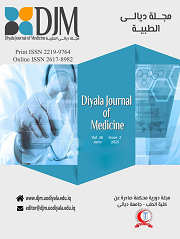Investigation of Ascaris lumbricoides Egg Morphology and Transmission Dynamics in the Iraqi Population
Main Article Content
Abstract
Background: Ascaris lumbricoides remains a significant public health concern, especially in settings with poor sanitation. Prevalence, transmission dynamics, and knowledge at the population level can inform the implementation of enhanced control. This study establishes the infection rate of A. lumbricoides in the Iraqi population, investigates factors associated with sociodemographics contributing to infection, and explores diversity in egg morphology
Patients and Methods: A total of 110 participants were involved in this cross-sectional study. Stool samples collected from each participant were examined microscopically for the presence of A. lumbricoides eggs. The sociodemographic data collected include age, gender, residence, educational status, occupation, hand-washing habits, and household size, as determined through structured questionnaires. Associations of these variables with infection rates were analyzed using various statistical tools. Egg morphology- decorticated and mamillated eggs- was investigated.
Results: The overall prevalence of A. lumbricoides was 14.64%, with a higher rate amongst rural residents, 9.09%, compared to urban people, 4.54% (p=0.0067). The infection rates were also strongly inversely related to education level; the highest rate was among those with no education, 7.27% (p<0.00001). A low infection rate was significantly associated with washing hands before meals (p<0.00001). The morphology varied, with the fertilized eggs showing both mamillated and decorticated morphology, while the eggs from the unfertilized females were larger, with disorganized contents internally.
Conclusion: This study reflects that high infection burdens with A. lumbricoides are significantly associated with sociodemographic variables, particularly education, hygiene practices, and rural residency. The diversity observed for egg morphology underlines further complications in the parasite's transmission and adaptation to environments. Sanitation improvement and extension programs may reduce the burden of infections caused by A. lumbricoides in Iraq.
Keywords: Ascaris lumbricoides, infection, parasites, education, Ascaris eggs.
Downloads
Article Details

This work is licensed under a Creative Commons Attribution 4.0 International License.





